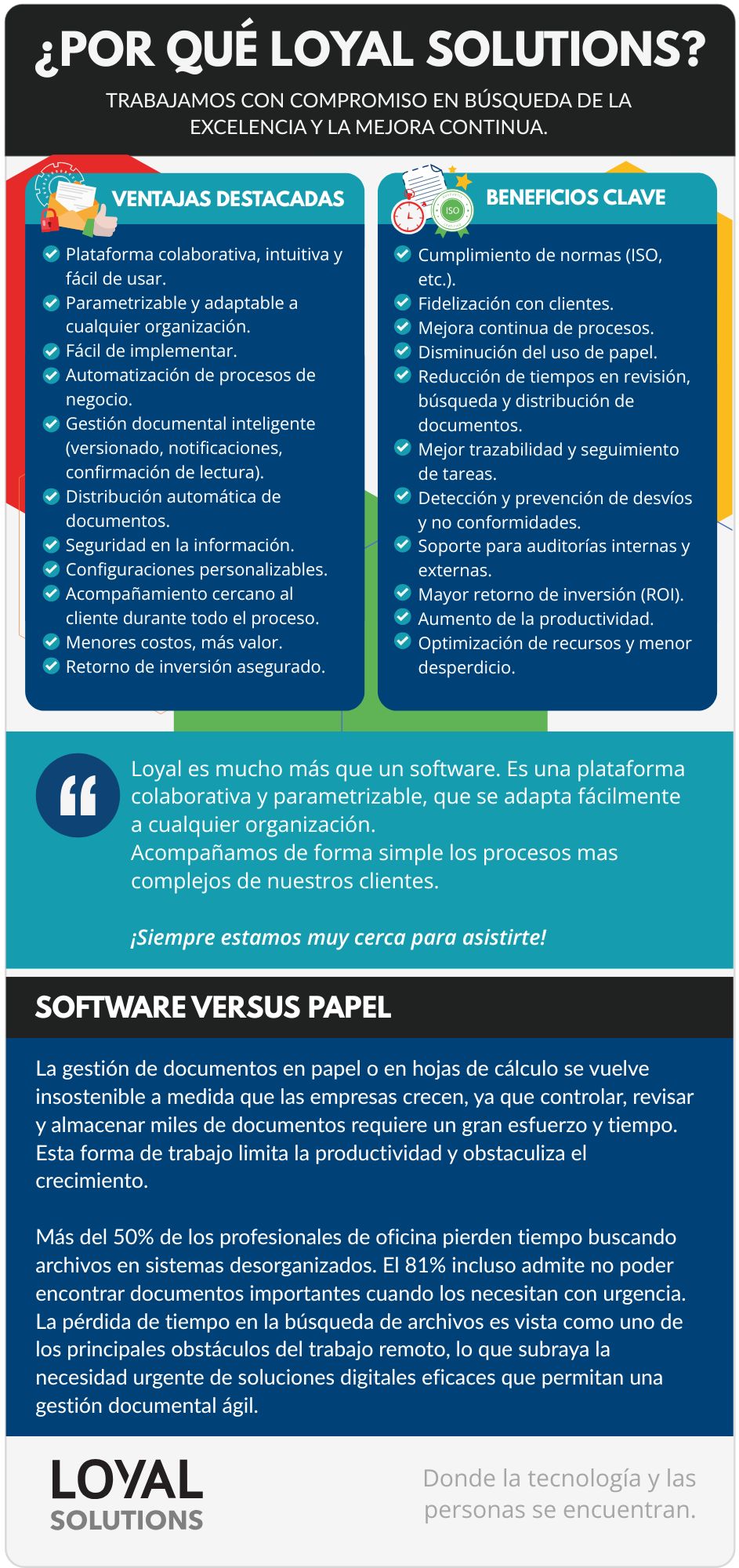Why LOYAL? Economic and Financial Benefits
Implementing quality management software can bring a range of economic and financial benefits to your company. Below are some of the most important ones:

Book a free demo
- Fewer Errors: By standardizing processes and improving quality, errors and rework are reduced, leading to significant savings in production costs.
- Resource Optimization: Efficient management of documentation and processes allows for better resource allocation, avoiding duplication and waste.
- Faster Response Time: Automated processes and easy access to information accelerate decision-making and reduce response times, potentially resulting in increased sales and improved customer service.
- Task Automation: Many repetitive tasks can be automated, freeing up time for staff to focus on higher-value activities.
- Improved Productivity: Having a tool that facilitates organization and access to information enables employees to be more productive and efficient in their work.
- Improved Product/Service Quality: With a quality management system in place, products or services consistently meet established standards, leading to higher customer satisfaction.
- Fewer Returns: Reduced errors and improved quality help decrease.
- Increased revenue: Improving quality and customer satisfaction can lead to increased sales and market share.
- Cost reduction: As mentioned above, implementing quality management software can generate significant cost savings.
- Accurate and up-to-date information: The software provides reliable, real-time information, enabling better, more strategic decision-making.
- Greater process visibility: By gaining a comprehensive view of processes, opportunities for improvement can be identified and resource allocation optimized.
- Avoid penalties: Compliance with applicable rules and regulations avoids financial and legal penalties.
- Access to new markets: Some quality certifications are required to access certain markets or customers.
In short, implementing quality management software can have a positive impact on your company’s finances and economy by reducing costs, increasing efficiency, improving quality, and facilitating decision-making.
How ROI is affected
Quality management software can have a significant impact on your company’s return on investment (ROI). Let’s see how:
How does quality management software impact ROI?
Improved efficiency
ROI Calculation Example:
Let’s say you implement quality management software and, as a result, reduce your non-quality costs by 20% annually. If these costs represented 5% of your annual revenue, and your initial investment in the software was €100,000, the ROI calculation would be as follows:
- Annual Savings: 5% of annual revenue * 20% = 1% of annual revenue
- Payback Time: €100,000 / (1% of annual revenue) = X years
Additional Considerations:
- Intangible Benefits: In addition to the financial benefits, implementing quality management software can generate intangible benefits such as improved brand image and an improved organizational culture.
- Total Cost of Ownership: When evaluating ROI, it is important to consider not only the initial cost of the software but also the costs associated with its implementation, maintenance, and training.
In short, quality management software can generate a significant return on investment by improving efficiency, reducing costs, increasing revenue, and improving customer satisfaction.
